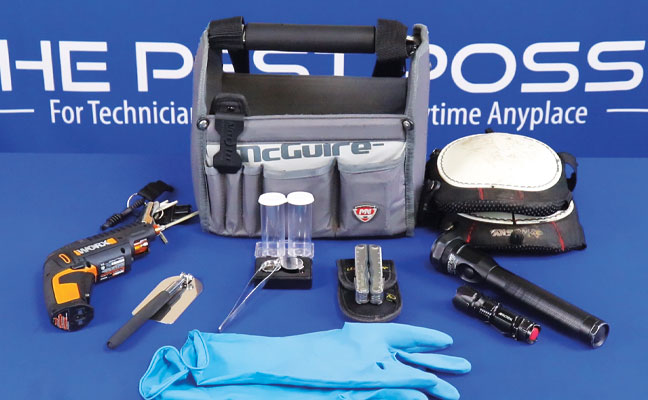If you’re not inspecting correctly, you’re not solving the problem; you’re just guessing.

Why training matters: The pest CSI mindset
A solid inspection often is the difference between resolving an issue the first time and getting that dreaded callback (again and again). Whether you’re new to the industry or a seasoned professional, sharpening your inspection skills will make every service more effective.
Look where others don’t
Pests don’t hang out in plain sight. They hide, and they’re really good at it. That’s why a detailed inspection is key. The goal isn’t just to spot pests, but to locate entry points, harborage areas and the conditions that allow pests to thrive.
Start outside
Look for gaps around doors, cracks in foundations and areas with poor drainage. Then move inside and check those often-ignored places: under and behind sinks, drop ceilings, utility closets and any room no one wants to enter. Basically, if it’s dark, damp or forgotten, inspect it.
Use the right tools
A pest management professional (PMP) without an inspection kit is like a mechanic without a wrench. A dedicated kit with the right tools will help you work smarter, not harder. Here’s what every inspection kit should include:
▶ High-lumen flashlight: Don’t skimp here. A bright, durable flashlight is your No. 1 tool for inspecting for pests and signs of activity in dim or hidden spaces.
▶ Glass-less inspection mirror: This tool allows you to see behind and under equipment without breaking your back. Bonus: Most food-processing facilities ban glass near production areas, so this shows you know the rules and came prepared.
▶ Magnifying glass: Great for inspecting insects you may encounter during your inspection, or for analyzing debris. Because sometimes the devil’s in the details.
▶ Specimen vials: A must for collecting and transporting samples for proper identification. Label them with the date, customer name and area found.
▶ Tweezers: Perfect for collecting small insects or bits
of evidence without damaging them.
▶ Bait station keys: You’ll encounter a wide variety of locked stations. Having the right keys saves time and shows you’re ready to assess
whether they’re being serviced.
▶ Multi-tool: A must-have for every PMP. A quality multi-tool helps you access those hard-to-reach inspection points quickly and safely. It’s your all-in-one sidekick for on- on-the-spot problem-solving.
▶ Pest monitors: Essential for tracking pest movement and gauging activity levels. Install a few during the initial inspection and check back in a few days. This not only gives you more data, but it also opens the door for a valuable follow-up conversation with a potential new client. Keep all these tools organized in a professional carrying case.
It not only reflects your level of professionalism but also ensures you don’t miss something important because you were fumbling around for the flashlight.
Keep learning, stay sharp
Even the most seasoned PMP can get complacent. That’s why ongoing training is so important. Learning about new pests, techniques and tools keeps your skills sharp and your game strong.
A great place to do that is Pest Posse TV. It’s packed with realworld, practical training you can squeeze into your schedule. Most courses clock in around 30 minutes, with fresh content added often.
Inspections aren’t just another task; they’re the foundation of everything we do. Use your tools, take good notes, stay curious, and always look twice. A great inspection doesn’t just solve today’s problem; it prevents tomorrow’s.
Leave A Comment